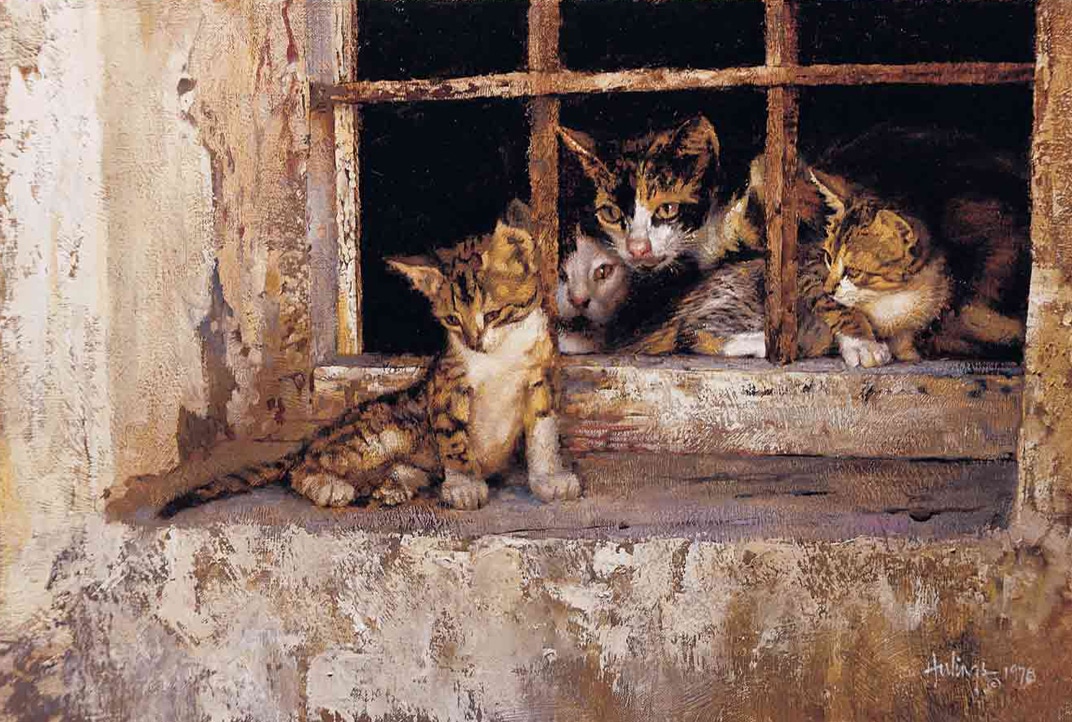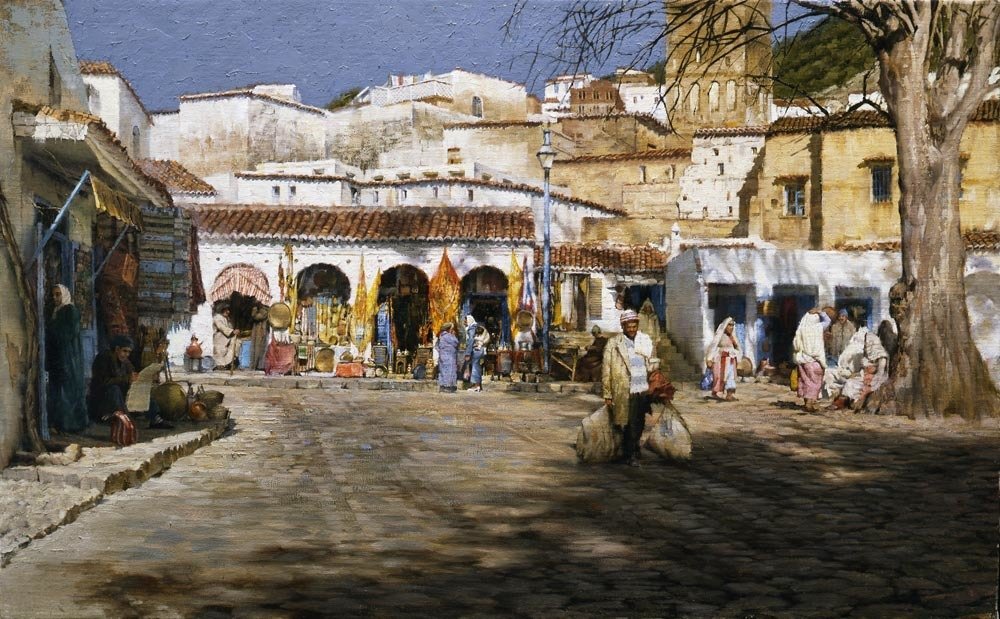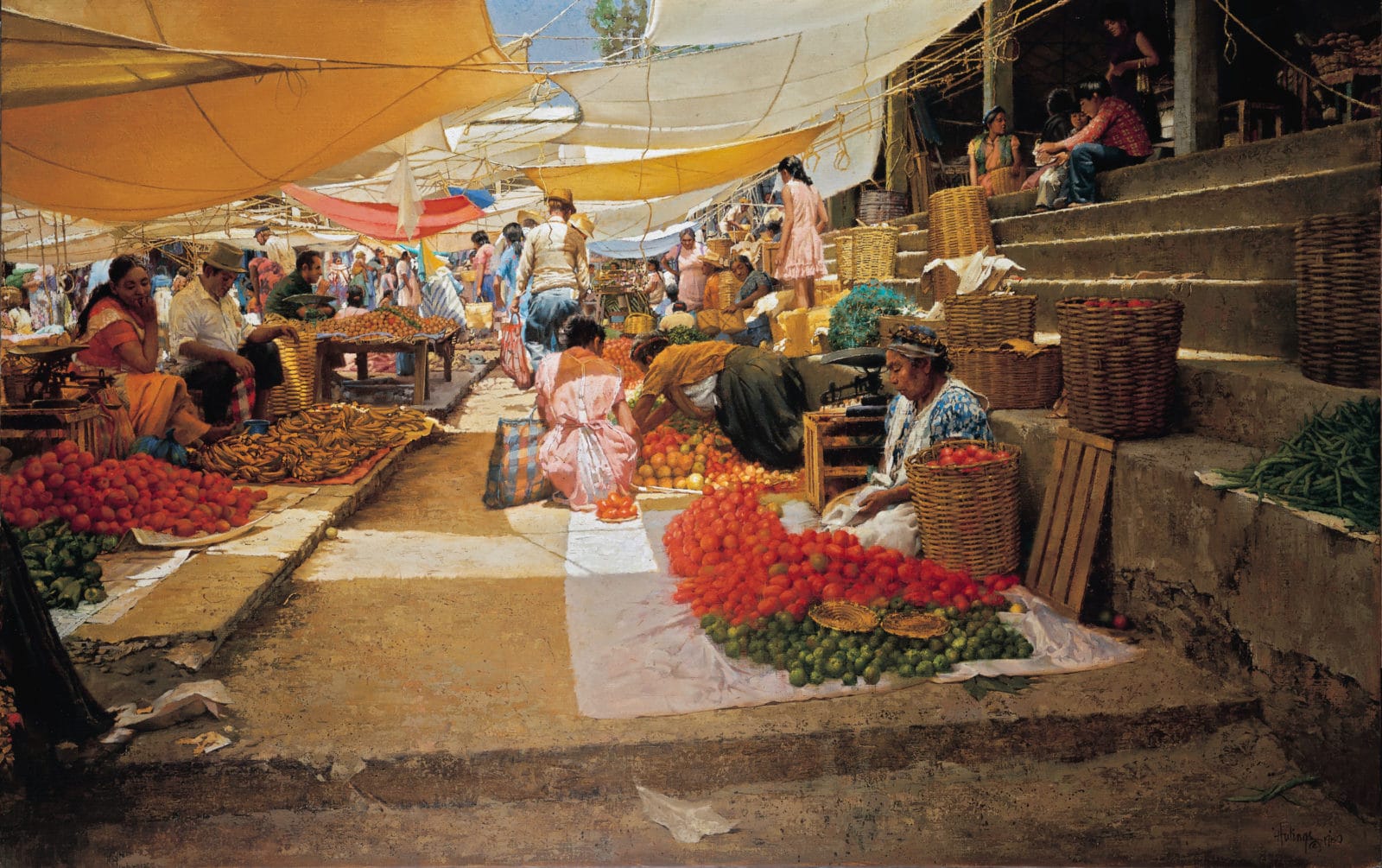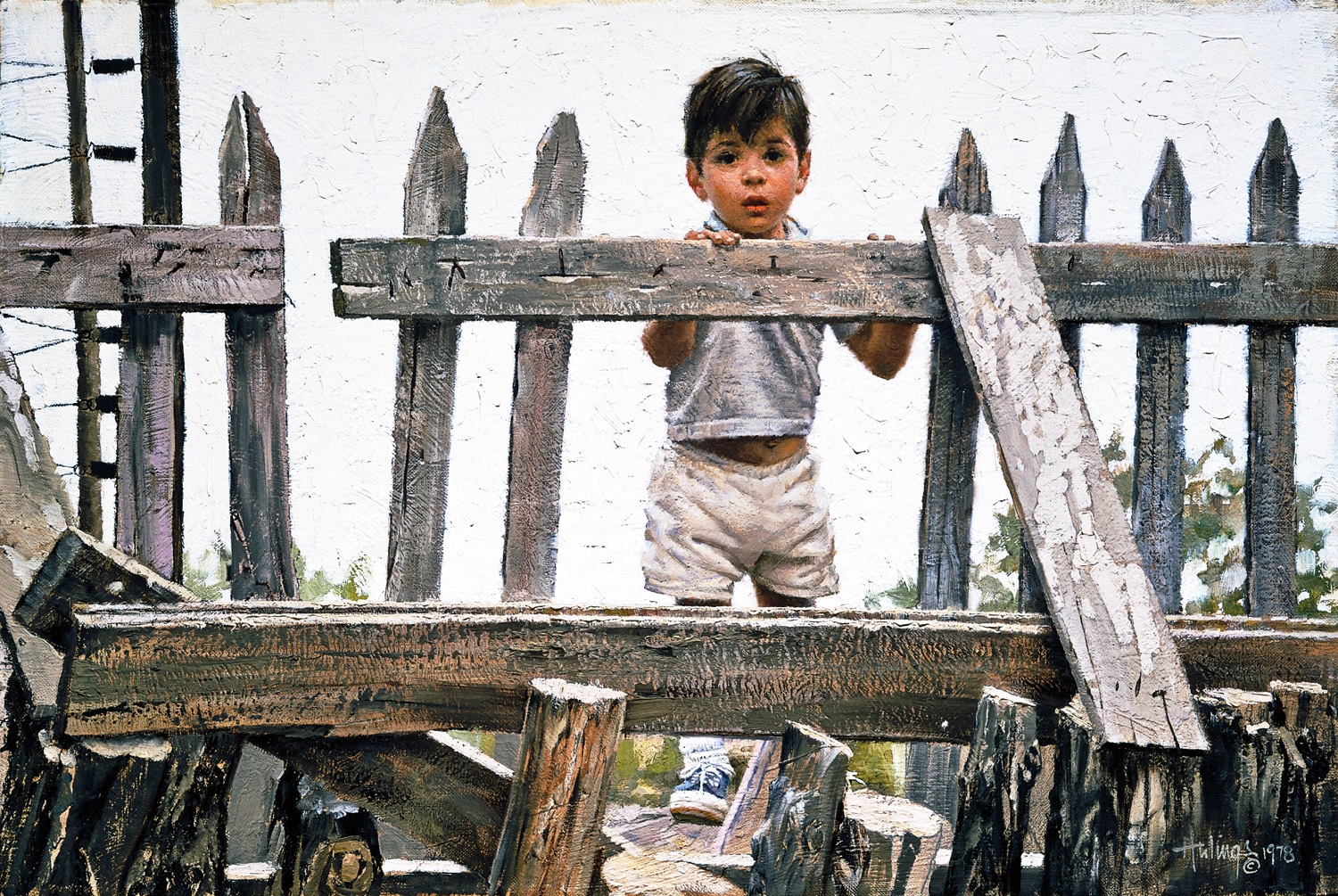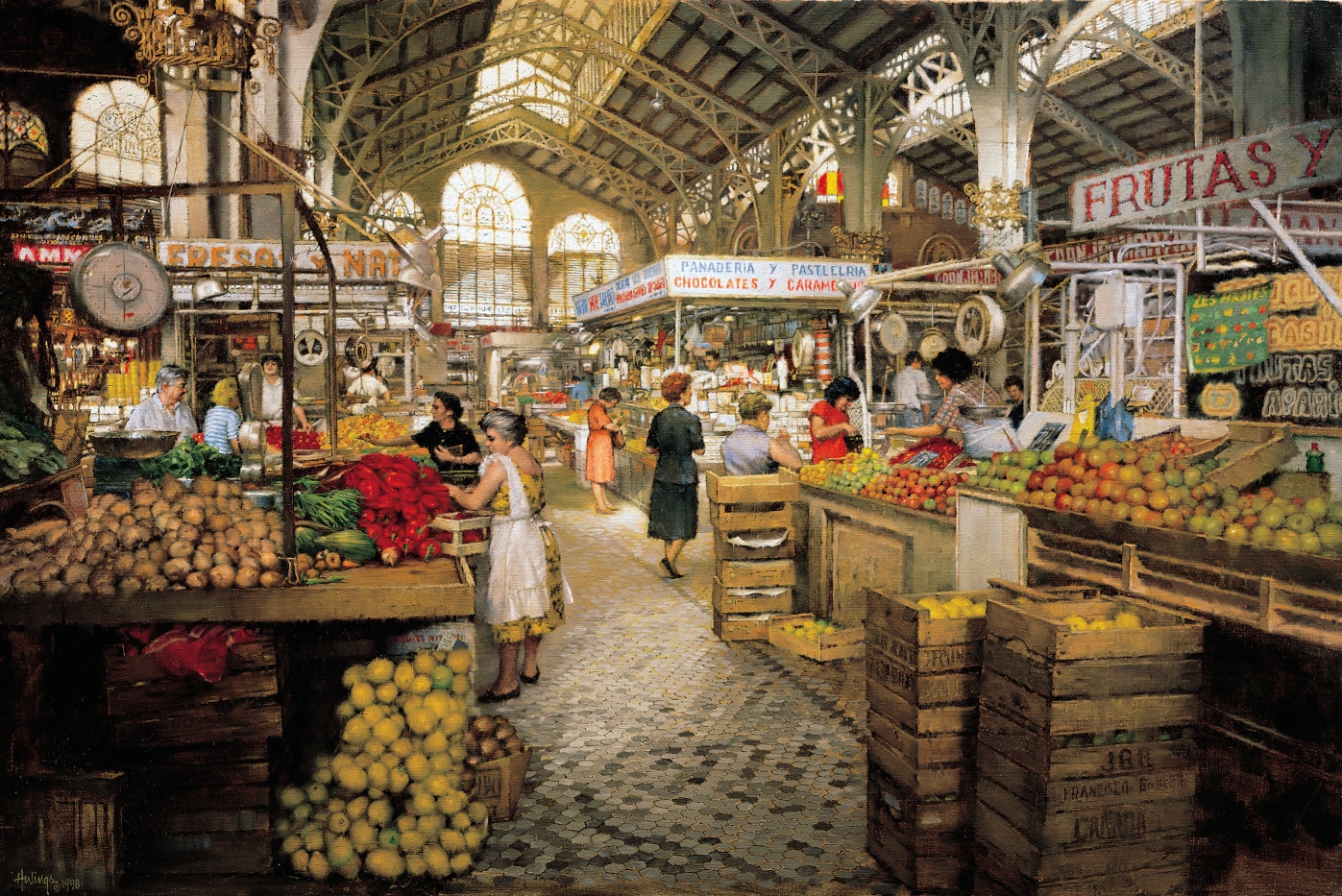My father was famous for painting donkeys, but he also managed to paint quite a number of cats. As we all know, cats are curious. This often makes them interesting subjects to paint, because they find their way into all kinds of things, and contort themselves into unusual shapes. They are, therefore, useful compositional elements.
Of course, the definition of the word can be important, too. Here’s an anecdote my father recounted in A Gallery of Paintings about this group of Spanish Cats:
“One time at a large art show I exhibited a little painting of a baby burro tied to a pole. It was sandwiched between two major paintings of Western wild animals. I was approached by a lady telling me how disappointed she was not to have seen it before it was sold because she empathized so with the little fellow. Then she said, ‘But I love cats, too. If you ever do a painting of a some cats, please keep me in mind.’
“Two or three years later I came upon this window full of frisky kittens with their mother in an abandoned hut and decided to paint them. When the picture was finished, I sent a photo of it to the lady for her consideration. She returned it with a short note: ‘I meant lions or cougars!'”
What I find interesting about this painting is the subtlety of color and the intensity of texture. Everything compliments the cats. They are yellow and black and white, and so are the walls, the window and the shadowy inside of the structure. Also fun to think about is what each of the cats is thinking. They are looking in different directions, and the mother is clearly on edge. The kitten on the right looks annoyed that the one on the left outside on the ledge.
So, if you like cats of this type, you can purchase a giclée of this Spanish family in our store.

